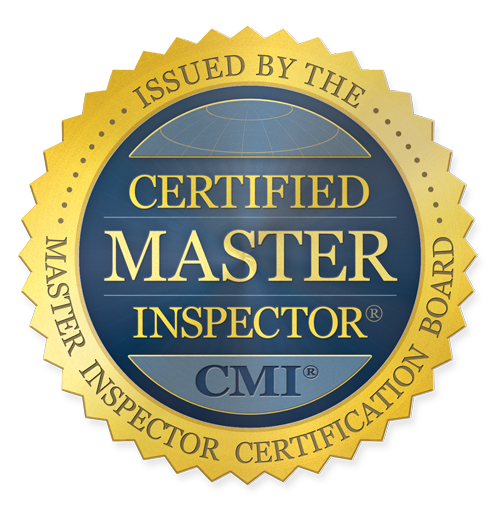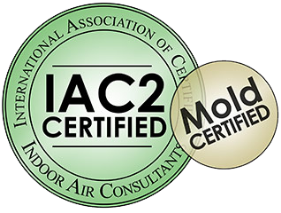A backed-up sewer is never any fun, but issues with a home’s sewage system also pose structural and health risks. A sewer scope inspection is an easy add-on for an upcoming 4-point or whole-home inspection.
We typically recommend this special inspection before purchasing an older home or if you experience any sewer system red flags.
Sewer Scope Inspections: The Basics
Sewer scope inspections use special cameras at the end of a long line, which runs through the system’s pipe and drainage components. We start at the main drain pipe, usually accessed from a vent pipe on the roof or at the cleanout located towards the street end of the property.
As we feed the camera and line further through the sewer line and drain system, images are returned to a screen on the inspector’s end. We watch the video feed closely, looking for evidence of the following:
- Cracks
- Damaged materials
- Clogs
- Outdated materials
- Roots growing against or into the line
- Low areas in the drain (called bellying)
- Separation or failures in a particular line
- Septic tank issues
These inspections, also called plumbing scope inspections, usually take a few minutes. However, larger homes or homes with more issues may require up to 30 minutes or more complete.
When To Schedule an Inspection of the Sewer Lines
As with any issues in major home systems (grading/foundation, roof, HVAC, electrical, etc.), it’s always best to find the problems before they cause further damage. The longer a repair waits, the more costly it is to fix.
Plus, poorly maintained sewer systems can cause significant health or structural risks, such as:
- Harmful gases seep into the home, causing odors and unhealthy indoor air quality
- Mold or mildew build-up
- Harmful bacteria, fungal, or virus exposure
- Shifts in the foundation or structural settling due to soft, mushy ground
- Sewer backup flooding into your home or yard(s)
We recommend scheduling a sewer inspection when…
Purchasing a home that’s 20 years old or older
Older homes are more prone to sewer issues. If you’re purchasing a home that is 20 to 25 years old or more, adding a sewer line inspection makes sense. Tree roots are one of the main sewer line offenders. Roots are tenacious and can make their way through virtually anything. Then, decades of things that shouldn’t be flushed or sent down a drain continue gathering built-up debris, eventually causing blockages that must be removed before pressure builds up and a crack or hole appears in the line.
The average cost of a sewer line inspection is about $150 to $300. The average cost of a central sewer line repair or replacement starts at anywhere from $75 o $150 per foot. So investing in the inspection is well worth it. Purchasing a home that needs a significant sewer repair or system rebuild can cost thousands of dollars – or tens of thousands – depending on the extent of the damage. And since issues can remain unseen underground for a long time, the sewer line inspection is the only way to know what lurks beneath.
You notice any of the following red flags
While initial cracks or holes may leak for a while before waving their red flags, other issues show up right away. Therefore, it’s a good idea to schedule a sewer line scope inspection if you notice any of the following:
- Water backups, soggy ground, or slow-moving water in toilets/bathroom drains: Don’t assume any water backups in your property’s basement, crawl space, or other areas are normal. A high-functioning sewer should drain consistently – and never back up – regardless of the weather. It’s also worth assessing the status of the sewer lines if you notice water drains more slowly from toilets, sinks, or showers/tubs.
- Shifting ground: If the soil is shifting or moving around your home, that’s not normal. Grading and drainage plans are designed with a functioning sewer in mind. If water continually leaks from the sewer or the sewer line shifts and moves, it affects the lay of the land around your house and the surrounding solid drains.
- Mold or mildew patches: Evidence of mold or mildew patches, especially towards the lower levels of the home, indicates that water is seeping from somewhere it shouldn’t. A sewer line is one of the first places we’d want to look if grading or drainage issues or other plumbing leaks aren’t obvious problems.
- Mature trees on the property: If your property has large, mature-growth trees within 20 feet of the home, it’s a good idea to schedule a sewer scope inspection every three to five years or so. Tree roots grow fast and can do incredible damage if they aren’t stopped in time.
- Unusual lush patches of lawn or garden space: Do patches of the lawn or garden seem inexplicably lusher than others? It could be that leaking sewage is fertilizing the landscape. Visually pleasing to the eyes, backed-up sewer material poses a health risk to people and pets.
- Pest infestations: A pest infestation may be an early sign of sewer line issues. Many pests live in sewer systems but move above ground to search for new homes when backups, clogs, or collapses force them out.
- Your home was built before 1985: Prior to the 70s, residential sewer lines were built using cast iron or Orangeburg pipes; and homes built in the 1980s often had sewer lines built using clay pipes. Unfortunately, these pre-1980s systems are the most likely to be cracked, broken, clogged, or crushed. If the inspection reveals the system is outdated, sewer system replacement is imperative.
Wondering Whether to Invest in a Sewer Line Scope Inspection?
Are you on the fence about whether or not to add a sewer scope inspection on to your upcoming home inspection? Give us a call here at Super Inspection Pros, Volusia County’s go-to home inspection company, at 386-279-0802.
We don’t upsell anything and are always available to make recommendations based on what we see when we get there. We’ll take a look at the home, discuss any concerns or potential concerns you or your agent have, and would only recommend a specialized inspection if we feel the benefits are worth it.

